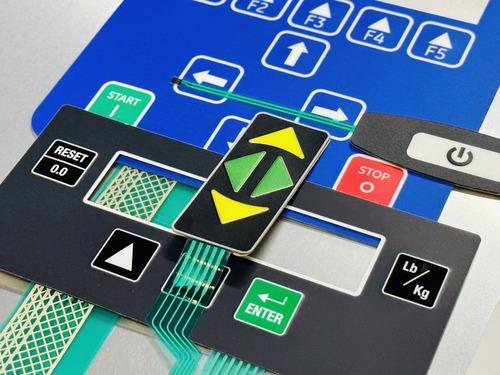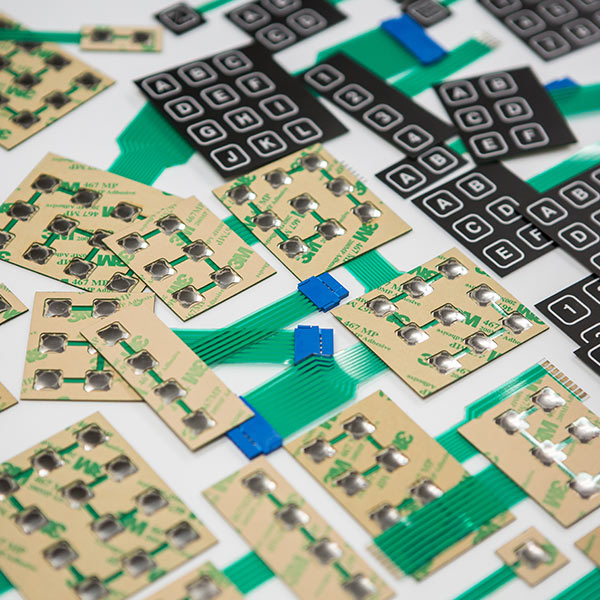Discover the Future of Control Interfaces: Why Membrane Switches Are Acquiring Appeal
As markets progressively focus on reliable and easy to use control user interfaces, membrane switches are arising as an engaging option that incorporates functionality with style adaptability. With the rise of wise innovation and sustainability concerns, the developments and abilities bordering membrane layer switches warrant closer evaluation.
Recognizing Membrane Layer Buttons
Membrane layer buttons are indispensable parts in modern-day digital tools, offering as interfaces between machines and customers. These buttons are composed of multiple layers, generally consisting of a visuals overlay, a spacer layer, and a circuit layer.

Sturdiness is another crucial feature, as membrane layer switches can be developed to stand up to environmental factors such as moisture, dust, and chemicals. This resilience makes them perfect for applications in harsh conditions. Overall, comprehending the structure and function of membrane layer switches is critical for appreciating their duty in the development of user interfaces in today's technology-driven globe.
Trick Advantages of Membrane Layer Buttons
Providing an array of benefits, membrane layer switches have come to be a preferred option in numerous applications (Membrane Switches). One of the main benefits is their compact style, enabling suppliers to optimize area in tools without compromising performance. Membrane layer buttons are lightweight, which is particularly useful in mobile electronic gadgets

In addition, these buttons provide exceptional durability. Built from adaptable products, they are immune to dirt, dampness, and a selection of ecological variables, making them ideal for rough problems. This durability frequently equates into a longer lifespan compared to traditional mechanical switches.
Moreover, membrane layer switches over permit for seamless assimilation of graphics and icons, supplying visual adaptability and improving individual experience. Customization options are extensive, allowing brand names to produce distinct interfaces that align with their item identification.
The level surface of membrane layer switches avoids the build-up of dust and gunk, making them optimal for sanitary environments. Membrane buttons are affordable, as they can be generated in high volumes at reduced prices, making them easily accessible for a wide variety of sectors.
Applications Across Industries

A myriad of industries are significantly adopting membrane buttons because of their convenience and functionality. These regulate user interfaces are especially widespread in the automotive market, where they are made use of in dashboards and infomercial systems, offering a easy to use and smooth interface. In the clinical area, membrane layer switches assist in the procedure of analysis tools and individual surveillance systems, guaranteeing dependability and convenience of usage in crucial circumstances.
In addition, the customer electronic devices market benefits from membrane switches in tools such as microwaves and remote controls, permitting streamlined style and improved durability. Membrane Switches. The aerospace sector also utilizes membrane switches in cockpit controls, where room constraints demand compact and efficient style remedies
In addition, the commercial field uses membrane layer buttons in equipment control board, using durability against severe settings and ensuring functional performance. Retail settings have actually accepted membrane layer switches in point-of-sale systems, enhancing user communication while keeping visual allure.
Style Patterns in Membrane Switches
Evolving along with technical improvements, style trends in membrane layer buttons are significantly concentrated on enhancing customer experience and visual charm. Modern membrane buttons are being created for simplicity and instinctive usage, allowing users to navigate user interfaces easily. This shift in the direction of user-centric style emphasizes responsive comments, ensuring that customers get immediate verification of their actions.
In addition, personalized graphics and colors are becoming standard functions in membrane button designs. This adaptability permits makers to create tailored interfaces that straighten with branding and particular customer requirements. The unification of backlighting is one more noticeable pattern, as it not just enhances visibility in low-light problems yet additionally adds an aesthetically striking aspect to the total style.
This change not just boosts aesthetics but helpful site also contributes to the overall functionality and durability of the switches. These design fads jointly emphasize the expanding value of integrating type and function in the development of membrane buttons, eventually improving the individual experience.
Future Overview for Control Interfaces
The future of Membrane Switches control interfaces is poised for substantial makeover as arising innovations continue to reshape customer communications throughout different devices. The assimilation of innovative materials, such as conductive inks and adaptable electronics, will boost the adaptability and performance of membrane layer buttons, making them increasingly versatile to an array of applications. Furthermore, the rise of the Net of Things (IoT) will certainly drive need for more instinctive, easy to use interfaces that can flawlessly integrate with clever gadgets.
As expert system and artificial intelligence advance, manage user interfaces will likely integrate even more customized features, enabling users to communicate with tools in manner ins which are customized to their practices and choices (Membrane Switches). This shift towards user-centric layout will place membrane layer switches as a vital player in the marketplace, particularly in fields like health care, auto, and consumer electronics
Furthermore, the promote sustainability will certainly urge manufacturers to explore environment-friendly products and manufacturing methods, guaranteeing that the future of control interfaces lines up with environmental considerations. Generally, as innovation remains to advance, membrane switches will end up being progressively advanced, leading the method for ingenious control options that boost customer experience and functional performance throughout varied markets.
Final Thought
In conclusion, the raising fostering of membrane switches over highlights their relevance in the evolution of control user interfaces. As easy to Full Article use user interfaces come to be important in the context of IoT and AI innovations, membrane layer buttons are positioned to play an essential duty.
As sectors progressively prioritize efficient and user-friendly control interfaces, membrane buttons are emerging as an engaging service that incorporates performance with layout adaptability.Sturdiness is another crucial attribute, as membrane buttons can be designed to withstand ecological elements such as dampness, dust, and chemicals.Developing along with technological developments, design trends in membrane layer buttons are increasingly concentrated on boosting customer experience and visual charm. Modern membrane buttons are being designed for simplicity and instinctive usage, allowing individuals to browse user interfaces effortlessly. These design patterns jointly emphasize the growing value of integrating kind and feature in the development of membrane switches, eventually improving the customer experience.